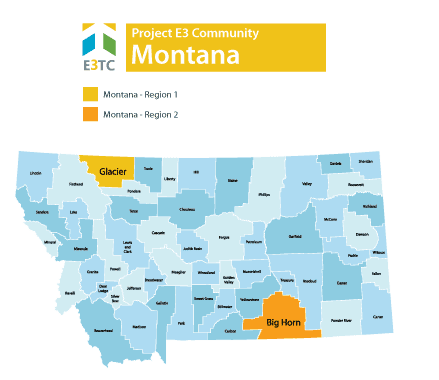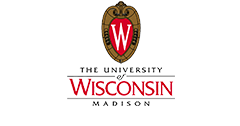Montana was chosen as a targeted community through the Vocational Rehabilitation Technical Assistance Center: Targeted Communities (VR-TAC-TC) or Project E3. Project E3 partnered with State VR Agencies and local community partners to improve outreach and employment-related services to underserved people with disabilities in this community.

Montana's beautiful landscape includes forests, prairies, highlands, and valleys. It includes the Rocky Mountains and the Continental Divide in the western part of the state and rolling plains in the eastern part of the state. Two-thirds of Montana is in the Great Plains.
Montana's economy is primarily based on agriculture, including ranching and cereal grain farming. Other significant economic activities include oil, gas, coal and hard rock mining, lumber, and the fastest-growing sector, tourism. Health care, service, and government sectors are also significant to the state's economy. In 2011, Montana ranked third in the nation in number of craft breweries per capita.
The population in Montana is distributed over a large geographic area. Montanans living in rural areas face unique challenges to both accessing services and finding employment. These challenges are compounded for those living with disability and poverty.
Targeted Communities
The state-federal vocational rehabilitation system in Montana faced many challenges as it strove to serve people with significant disabilities and promote competitive integrated employment. Project E3 provided intensive technical assistance to two regions of the state:

Key Information:
Native American Population
Glacier County
BIG HORN COUNTY
Blackfeet Indian Reservation
Home to the Blackfeet Nation
- Located in Glacier County
- One of the 10 largest tribes in the United States
Poverty Rate
National rate = 12.8%
Unemployment
National rate = 4.4%
Disability Rate
National rate = 13.5%
VR Case Closure
National rate = 31%
College Graduates
State rate = 29%
Targeted Populations
Within the targeted communities, Project E3 focused on improving vocational rehabilitation service outcomes for these populations:
These populations were characterized as:
Primary Challenges for Targeted Populations
The combination of the challenges above and other factors created significant barriers for persons with disabilities living in Montana, including:
Key Strategies to Address Barriers
Following are some of the key strategies developed and implemented to address the targeted populations' challenges and barriers to employment.
Community Based Participatory Research (CBPR): To understand a community’s issues and concerns, one needs data and information both supplied by common data sources and interpreted by the community to better understand their issues and possible solutions to those issues. CBPR’s methodology is predicated on deep and extensive community involvement in the identification of issues and concerns and in the resolution of those issues and concerns.
Motivational Interviewing: The Crow Agency identified MI as a key strategy for their staff working with persons with disabilities. This was supplemented with training on Impression Management.
Impression Management Training Tools
- Outline: Impression Management Workshop
- Presentation: Impression Management Workshop
- Handout: Commonly Used Impression Management Techniques
- Exercise: Impression Management Techniques
Motivational Interviewing
Montana Overview PowerPoint Presentation
Project Outcomes
Project E3 provided Montana’s state Vocational Rehabilitation agencies and their partners with the skills and competencies needed to effectively and efficiently address barriers to competitive integrated employment and community integration encountered by persons with disabilities in these regions.
Our specific goals for this project were to:
We will leverage promising practices, knowledge, and experience gained from this project to expand employment opportunities for individuals with disabilities from underserved and economically disadvantaged populations throughout Montana and across the United States.
Tools and Resources
Impression Management Training Tools
- Outline: Impression Management Workshop
- Presentation: Impression Management Workshop
- Handout: Commonly Used Impression Management Techniques
- Exercise: Impression Management Techniques
Social Skills Workshop
- Presentation: Social Skills Workshop
- Exercise: Community Participation That Reflects Prosocial Behavior
Motivational Interviewing
More Information
For further information about these community activities contact:

Tim Tansey, Ph.D.
Professor
tntansey@wisc.edu


